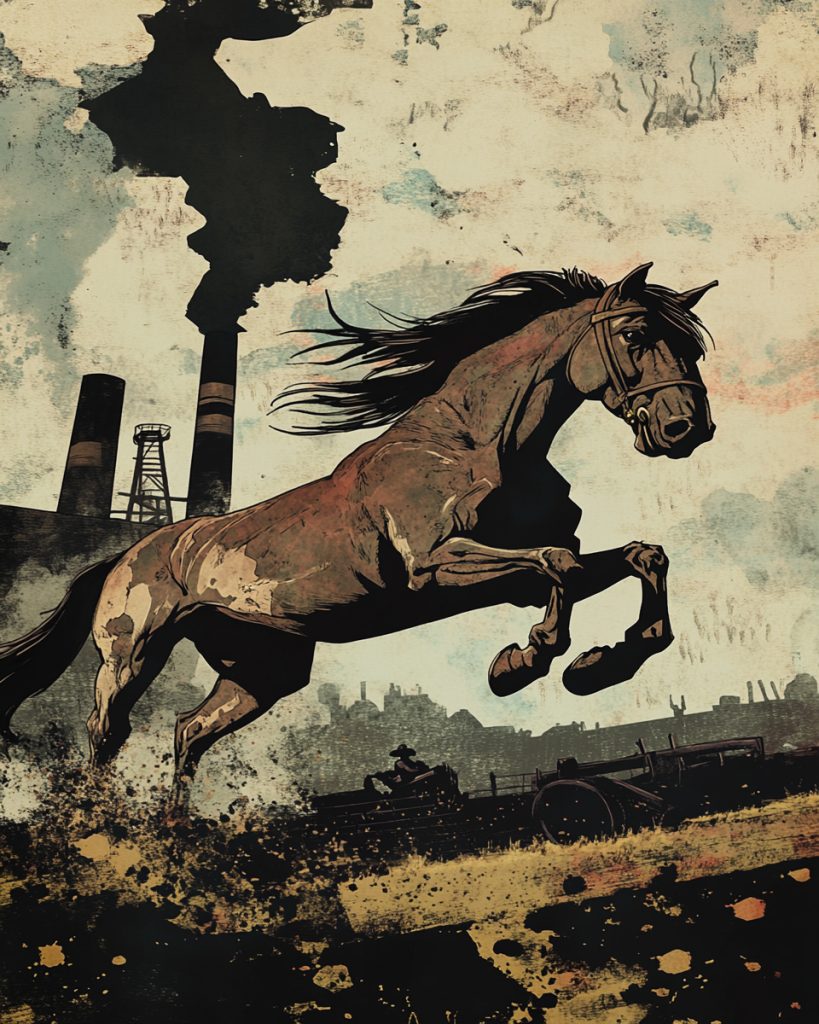As we delve into the fascinating world of 19th-century farming, we uncover a surprising hero at the heart of progress: the horse. These magnificent creatures were far more than mere beasts of burden; they were the living engines that powered the Industrial Revolution, each one performing tasks equivalent to six human laborers. Let’s trot back in time and explore how horse-drawn agriculture shaped our world and laid the foundations for modern society.
The Powerhouse of 19th-Century Farming
Picture a sun-drenched wheat field in 1800. A farmer, aided by two oxen, toils from dawn to dusk, commanding a mere 800 watts of draft power. Now, fast-forward to the century’s end. The same field buzzes with activity as a farmer guides a horse-drawn combine, harnessing the might of 30 horses—a staggering 18,000 watts of power at his fingertips. This transformation exemplifies the revolutionary changes in 19th-century farming.
A well-fed horse of the era was a true marvel of nature. With their impressive strength and stamina, these animals could plow, haul, and labor far beyond human capacity. They worked longer hours without rest, dramatically increasing productivity across various sectors. The impact on agriculture was profound – what once took seven minutes to produce a kilogram of wheat in New England at the century’s dawn was reduced to a mere half-minute in California’s Central Valley by 1900.
The Cost of Progress in Horse-Drawn Agriculture
But such power came at a cost. These equine powerhouses required substantial resources to maintain their impressive output. An average horse consumed nearly two tonnes of feed grain annually – nine times the amount eaten by a human. The land needed to feed a single working horse could have alternatively nourished six people, highlighting the significant investment required to sustain horse-drawn agriculture.
From Rural Fields to Urban Streets: The Horse’s Role in the Industrial Revolution
The horse’s influence wasn’t confined to rural landscapes. As the Industrial Revolution progressed, cities like London found themselves home to hundreds of thousands of horses, vital for transportation and delivery services. This urban equine population created unique challenges, from feeding and stabling to waste management, shaping the very fabric of city life during the Industrial Revolution.
The Twilight of Horse-Drawn Agriculture
Despite their remarkable capabilities, even these mighty steeds had their limitations. They needed rest, fell prey to illness and injury, and their usefulness was constrained by the availability of feed and pasture. As the 20th century dawned, a new phase of the Industrial Revolution began to emerge. By 1927, tractors had achieved equal power capacity to draft animals in American agriculture, signaling the end of horse-drawn agriculture’s reign as the primary source of power.
By acknowledging the crucial role of horses in 19th-century farming and the broader Industrial Revolution, we gain a fuller, richer understanding of our journey as a civilization. It’s time we gave these forgotten titans their due place in the story of human progress. The transition from horse-drawn agriculture to mechanized farming wasn’t just a change in tools – it was a fundamental shift in our relationship with the land and the animals that helped us cultivate it.

